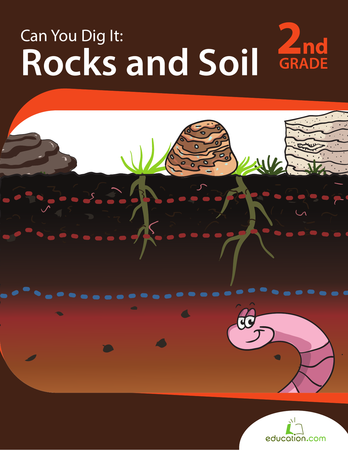5 Rock Cycle Lesson Plans

The rock cycle is a fundamental concept in geology, illustrating the dynamic transition of rocks between the three main types: igneous, sedimentary, and metamorphic. This process is driven by geological forces such as heat, pressure, and erosion, shaping our planet over millions of years. Understanding the rock cycle is crucial for comprehending Earth’s history, including how landscapes form and change, and the distribution of natural resources. Here are five lesson plans designed to teach the rock cycle to students of various ages and skill levels, incorporating different learning objectives, materials, and activities.
Lesson Plan 1: Introduction to the Rock Cycle for Elementary Students
Objective: To introduce elementary students to the basic concepts of the rock cycle, focusing on the formation and transformation of igneous, sedimentary, and metamorphic rocks.
Materials: - Diagrams of the rock cycle - Samples of igneous, sedimentary, and metamorphic rocks - Clay or play dough for modeling - Worksheet with simple questions about the rock cycle
Procedure: 1. Introduction: Use simple terms to explain what rocks are and introduce the three main types. 2. Formation Processes: Explain how each type of rock forms (e.g., igneous from cooling magma, sedimentary from compressed sediments, metamorphic from altered existing rocks under pressure and heat). 3. Modeling Activity: Use clay or play dough to demonstrate the transformation processes (e.g., squishing play dough to simulate pressure turning sedimentary rock into metamorphic rock). 4. Rock Samples: Show students real samples of each rock type, encouraging them to observe and describe differences. 5. Conclusion: Have students draw and explain their understanding of the rock cycle, emphasizing the continuous nature of rock transformation.
Lesson Plan 2: Detailed Rock Cycle Processes for Middle School Students
Objective: To delve deeper into the rock cycle, exploring the processes of weathering, erosion, deposition, and plate tectonics, and how these processes interact to form and transform rocks.
Materials: - Detailed diagrams of the rock cycle showing intermediate stages - Video clips illustrating weathering, erosion, and plate tectonics - Examples of rocks at different stages of transformation - Interactive model or simulation of plate tectonics - Worksheet with questions on the processes and interactions within the rock cycle
Procedure: 1. Introduction Review: Briefly review the basic rock cycle. 2. Weathering and Erosion: Explain these processes with videos and examples, highlighting how they lead to sediment formation. 3. Deposition and Lithification: Discuss how sediments compact and cement to form sedimentary rocks. 4. Metamorphism: Use diagrams and models to explain how heat and pressure alter rocks. 5. Plate Tectonics: Introduce the role of tectonic plates in the rock cycle, using interactive models or simulations. 6. Activity: Have students create a flowchart or diagram illustrating the rock cycle, including these processes.
Lesson Plan 3: Rock Cycle Simulation for High School Students
Objective: To engage high school students in a hands-on simulation of the rock cycle, emphasizing the dynamic and continuous nature of geological processes.
Materials: - Various textures of sand, silt, and clay - Baking soda, vinegar, a thermometer, and a hot plate - Small containers or molds for simulating rock formation - Rock samples for reference - Data sheets for recording observations
Procedure: 1. Simulation Introduction: Explain the objectives and the materials to be used. 2. Sedimentary Rock Formation: Mix sand, silt, and clay, then apply pressure to simulate compaction. 3. Igneous Rock Formation: Melt ingredients (like wax or small rocks) and cool them to demonstrate solidification. 4. Metamorphic Rock Formation: Use heat (from a hot plate) and pressure (manual or with a press) to alter the rocks. 5. Chemical Reaction Simulation: Use baking soda and vinegar to demonstrate chemical changes, akin to those in hydrothermal metamorphism. 6. Conclusion: Have students analyze their observations, relating them to real-world rock cycle processes.
Lesson Plan 4: Advanced Rock Cycle Concepts for College Students
Objective: To explore advanced concepts within the rock cycle, including the role of geochemical cycles, the impact of biological processes, and the integration of the rock cycle with Earth’s systems.
Materials: - Advanced texts or research articles on geochemical cycles and biological contributions to the rock cycle - Case studies of specific geological formations or regions - Computer simulations or models of geochemical cycles and plate tectonics - Group presentation materials
Procedure: 1. Introduction: Review the rock cycle and introduce the concepts of geochemical cycles and biological processes. 2. Lecture and Discussion: Delve into advanced topics such as the carbon cycle, the role of microorganisms in weathering, and how human activities impact the rock cycle. 3. Case Studies: Analyze specific examples of how the rock cycle operates in different contexts, such as mountain building or oceanic crust formation. 4. Simulation Activity: Use computer models to simulate the impacts of different factors (like climate change or tectonic activity) on the rock cycle. 5. Group Presentations: Divide students into groups to research and present on a selected aspect of the advanced rock cycle, focusing on recent research findings.
Lesson Plan 5: Interdisciplinary Approach to the Rock Cycle
Objective: To integrate the study of the rock cycle with other disciplines, such as biology, chemistry, and physics, to provide a holistic understanding of Earth’s systems and the interconnectedness of geological processes.
Materials: - Interdisciplinary texts and resources that connect the rock cycle to biology (e.g., fossilization), chemistry (e.g., geochemical reactions), and physics (e.g., thermodynamics of metamorphism) - Projects that require integration of multiple disciplines (e.g., modeling the impact of geological processes on ecosystems) - Guest lectures from experts in related fields - Collaborative project materials (e.g., posters, presentations)
Procedure: 1. Introduction to Interdisciplinary Connections: Explain how different disciplines intersect with the rock cycle. 2. Discipline-Specific Explorations: Dive into how principles from biology, chemistry, and physics apply to and are influenced by the rock cycle. 3. Project Introduction: Assign a project that requires students to apply an interdisciplinary approach to a problem or scenario related to the rock cycle. 4. Collaborative Work: Have students work in teams to research, design, and present their projects, ensuring integration of multiple disciplines. 5. Conclusion: Host a symposium where students present their projects, encouraging peer feedback and discussion on the interdisciplinary aspects of the rock cycle.
Each of these lesson plans is designed to cater to different learning needs and environments, from introducing basic concepts to exploring advanced and interdisciplinary aspects of the rock cycle. By engaging students in a variety of activities, from hands-on simulations to research projects, educators can foster a deep and nuanced understanding of this fundamental geological process.
